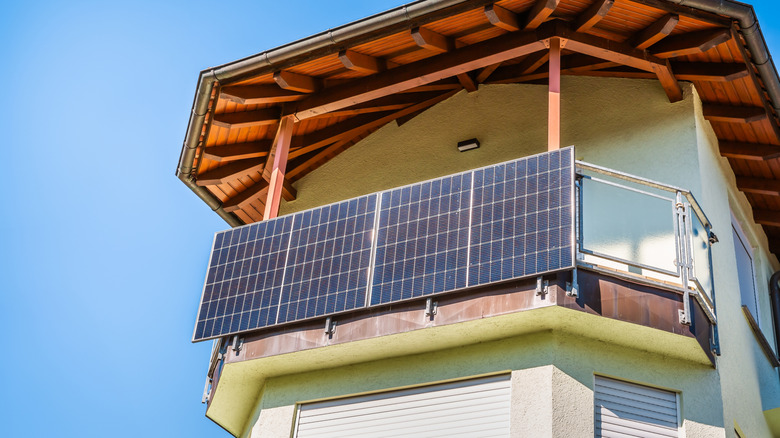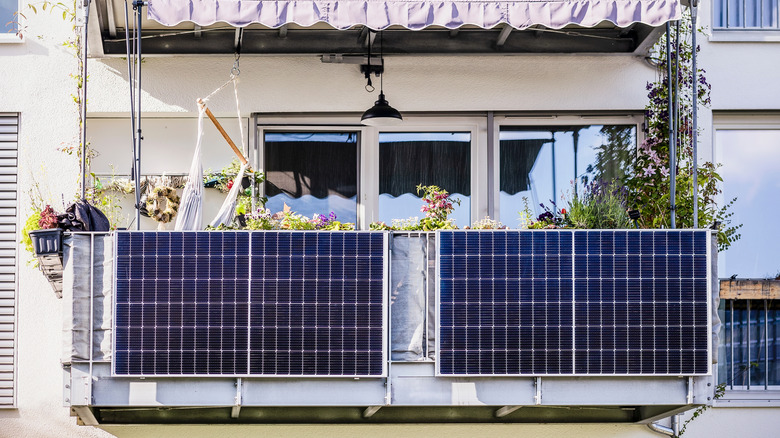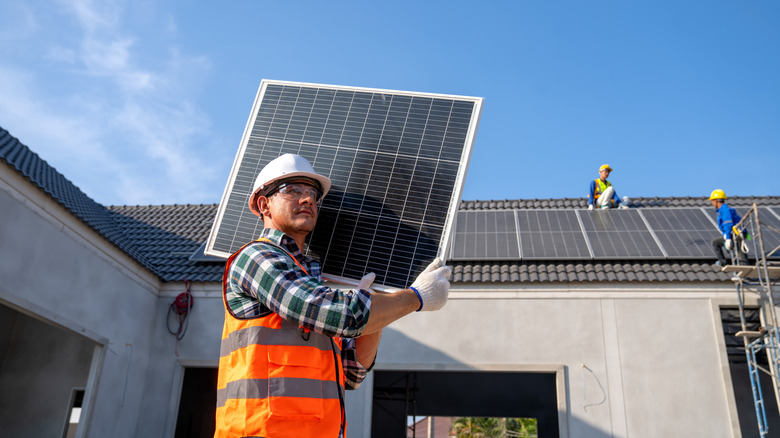Thrifty Homeowners Are Avoiding Rooftop Solar Panels & Investing In Cheap Plug-And-Play Options
Rooftop solar as an alternative energy source has been recommended to homeowners for years. It's one of the best ways to cut utility bills, help the environment, and keep your home running through unexpected blackouts. But even with these benefits, one thing that's holding homeowners back from getting a rooftop solar installation on their property is the massive investment upfront. It's not only the equipment cost you have to think about. Permitting fees, contractor labor, and other financing charges can easily add up and make the total price climb into the tens of thousands of dollars.
While solar installation has been steadily going down every year, it's still nowhere near affordable for many. Thankfully, there's actually a way to go solar without breaking the bank: plug-and-play solar. Traditional rooftop solar is still pretty much in demand, but the plug-and-play option — which allows you to install solar panels on your balcony — is becoming more appealing to thrifty homeowners who want to avoid spending as much. In fact, there are already adopters in the Bay Area, as reported by KQED.
What is a plug-and-play solar panel?
A plug-and-play solar panel system is a scaled-down version of a rooftop solar panel. At a minimum, it consists of two to four panels, a grid-tied microinverter, mounting hardware, and a cable. Some vendors, however, bundle in a power monitor and battery too.
The plug-and-play solar panel system generally works the same way as the traditional rooftop solar. During the day, the panels use the sun to produce DC power, which they then feed to the microinverter. The microinverter plugs into a regular wall outlet in your home using the included cable. When it receives DC power from the panel, it converts it to AC — the type your appliances need — and sends it to your home via the outlet it's connected to. This is what powers your appliances. If the plug-and-play solar comes with a connected battery, any excess energy your home doesn't need is sent to the battery for nighttime use. If your system doesn't have a battery, though, you can only benefit from the plug-and-play solar during daytime (but not necessarily just when the sun is out — solar panels work even when it's cloudy).
Capacity-wise, plug-and-play solar panels are typically rated at under 2,000W for the entire system. This, unfortunately, won't be enough for your entire home, unlike a rooftop system, but it can run the essentials like fridge, router, air conditioner, lights, and laptop and phone charger. Because of its small scale, it's naturally more affordable upfront. Depending on the capacity, you're looking at paying around $1,000 to $2,000 for the basic setup and double that price for one with a battery. For instance, the EcoFlow STREAM system costs $1,599 for an 800W system, while the SolarFlow Kit from Zendure (1,640W with battery) will set you back $3,900, compared to $25,000 to $33,000 for traditional solar panels.
Plug-and-play solar vs. rooftop solar
While a plug-and-play solar system has fewer components and a simple, easy-to-understand connection layout, there is much more going on with rooftop solar. In fact, the number of solar panels for your entire home alone usually starts at 15 for rooftop solar, but won't go over five for plug-and-play solar. The connections of the components are also more technical.
When it comes to installation and paperwork, plug-and-play solar is made for DIY users and has little to no permits needed. You can easily install it yourself without consulting anyone, unless you live in a rented property. Some kits won't even take an hour to set up. Installation of a rooftop solar, on the other hand, can last for one to three days and require as many as ten professional installers. Before you even get started, you have to get permits and other paperwork, which can take weeks. Compared to a traditional system that needs a solid roof structure inspected by experts, plug-and-play solar panels can be mounted practically anywhere that receives sunlight — on your rooftop, wall, balcony, or outdoor space.
With these differences, it's clear that plug-and-play solar and rooftop solar target completely distinct users. The latter caters to homeowners who want a more permanent setup and have high electricity usage. For renters who can't modify their rooftops and those who want to save on electricity but are on a budget, plug-and-play solar is more practical.


